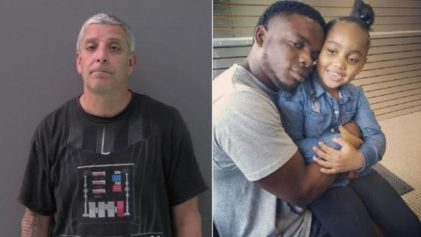The federal government is launching a national database that will track when law enforcement officers use deadly force, providing more transparency about police shootings that have inflamed tensions in cities around the country.
For years, the public has debated whether law enforcement have become too trigger-happy — especially in dealing with African-Americans and minorities — but basic information about police shootings and use of force has been elusive.

FILE – In this file image made July 6, 2016, from video captured by a camera in the squad car of St. Anthony Police officer Jeronimo Yanez, the Minnesota police officer, left, is shown after shooting into the vehicle at Philando Castile during a traffic stop in Falcon Heights, Minn., as the 4-year-old daughter of Castile’s girlfriend, Diamond Reynolds, starts to get out of the car and is grabbed by an officer. (St. Anthony Police Department via AP, File)
It’s mainly been left to news organizations to fill the void by compiling their own databases to understand the problem, an effort that took on greater urgency in the wake of deadly police shootings of unarmed black men that gave rise to the Black Lives Matter movement.
The FBI national database, announced recently and being launched in January, will catalog incidents in which a death or serious bodily injury occurs, or when officers discharge a firearm at or in the direction of someone. It also will track gender, age, ethnicity and other demographic information.
There will be limitations, however, because police departments are not required to report their information to the national database.
“It strikes me as sort of crazy that in a modern, First World country that prioritizes democratic freedoms the way that the United States does, we don’t have the basic information that we need to have to discuss a fairly important issue of officers taking civilians’ lives,” said Seth Stoughton, an associate law professor at the University of South Carolina who has researched police use of force for years.
There are an estimated 60 million encounters between officers and civilians every year. About 1,000 people are killed in altercations with police each year.
Police estimate that less than 5 percent of arrests involve use of force. Law enforcement officials hope the database will help dispel the notion that fatal encounters and inappropriate use of force are rampant.
“The whole point of having a national database is so everyone can speak from a factual basis about what’s really happening. There’s so much news today about police use of force and yet there has never been a factual, established database against which to compare,” said Rick Myers, executive director of the Major Cities Chiefs Association. “If you listen to the national narrative of the police use of force, you’d think it was much higher than that.”
It will not be mandatory for agencies to report the information. A related FBI database that collects data on officers killed and assaulted shows that about 11,000 police agencies — out of 18,000 nationwide — provide information.
Stoughton anticipates a similar number of agencies will provide information to the new database.
The agencies most likely to provide the data, he said, will be larger and mid-sized agencies, many of them that already collect and disseminate information to the public on these encounters.
“It at least starts us down that road and it’s a road that we as a society that we’ve been reluctant to walk down before,” Stoughton said.
John Bostain, a former police officer in Virginia who now travels the country training law enforcement, said he hopes most agencies will participate.
He’s concerned that some agencies may not be willing to participate or may not have the resources to provide the data to the FBI. The database will only be useful and reliable if agencies make a point of participating, he said.
The national debate makes it especially imperative to participate, he said.
“Law enforcement was slow on the uptake. I don’t think law enforcement realized we could’ve gotten out front of this narrative,” Bostain said.


